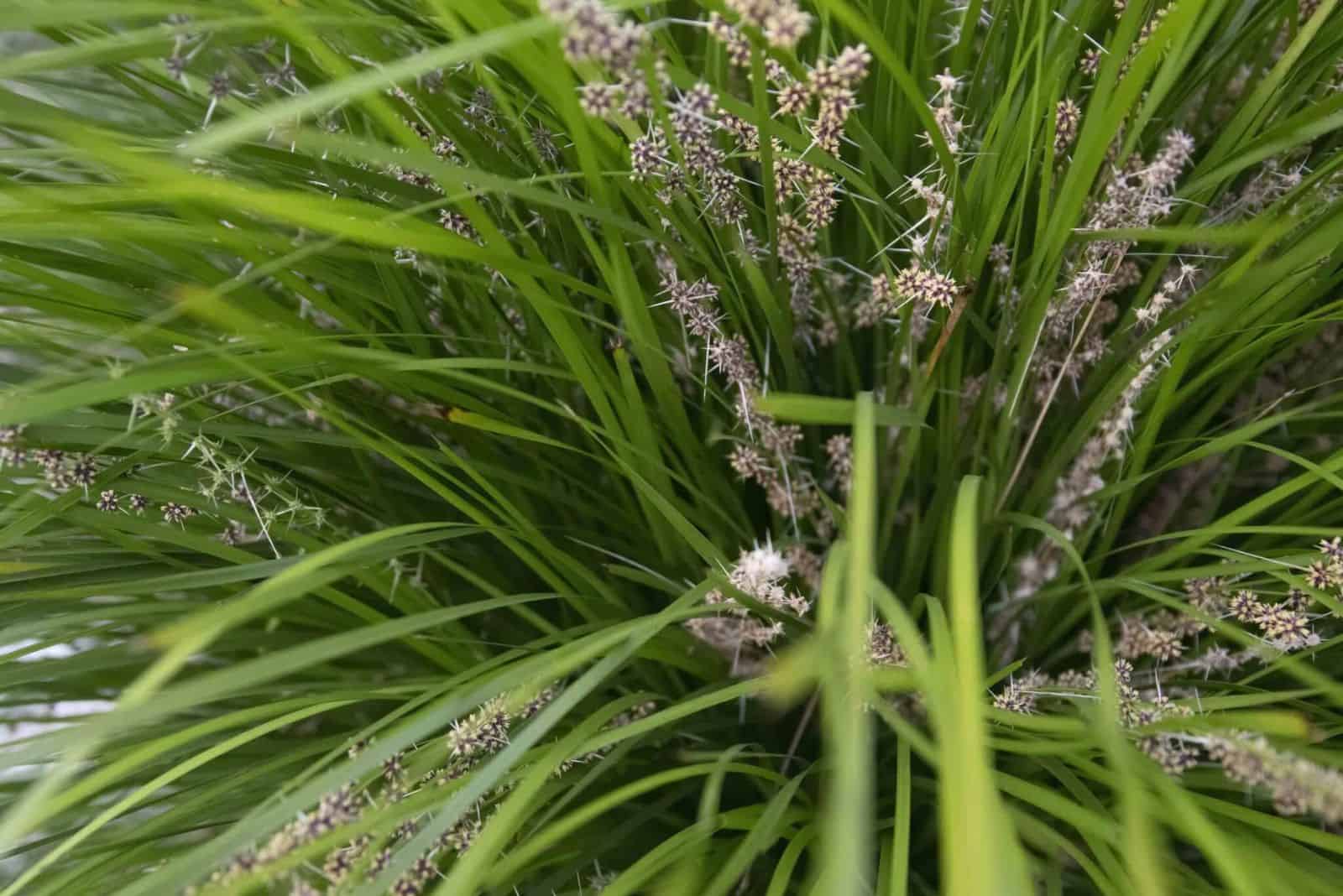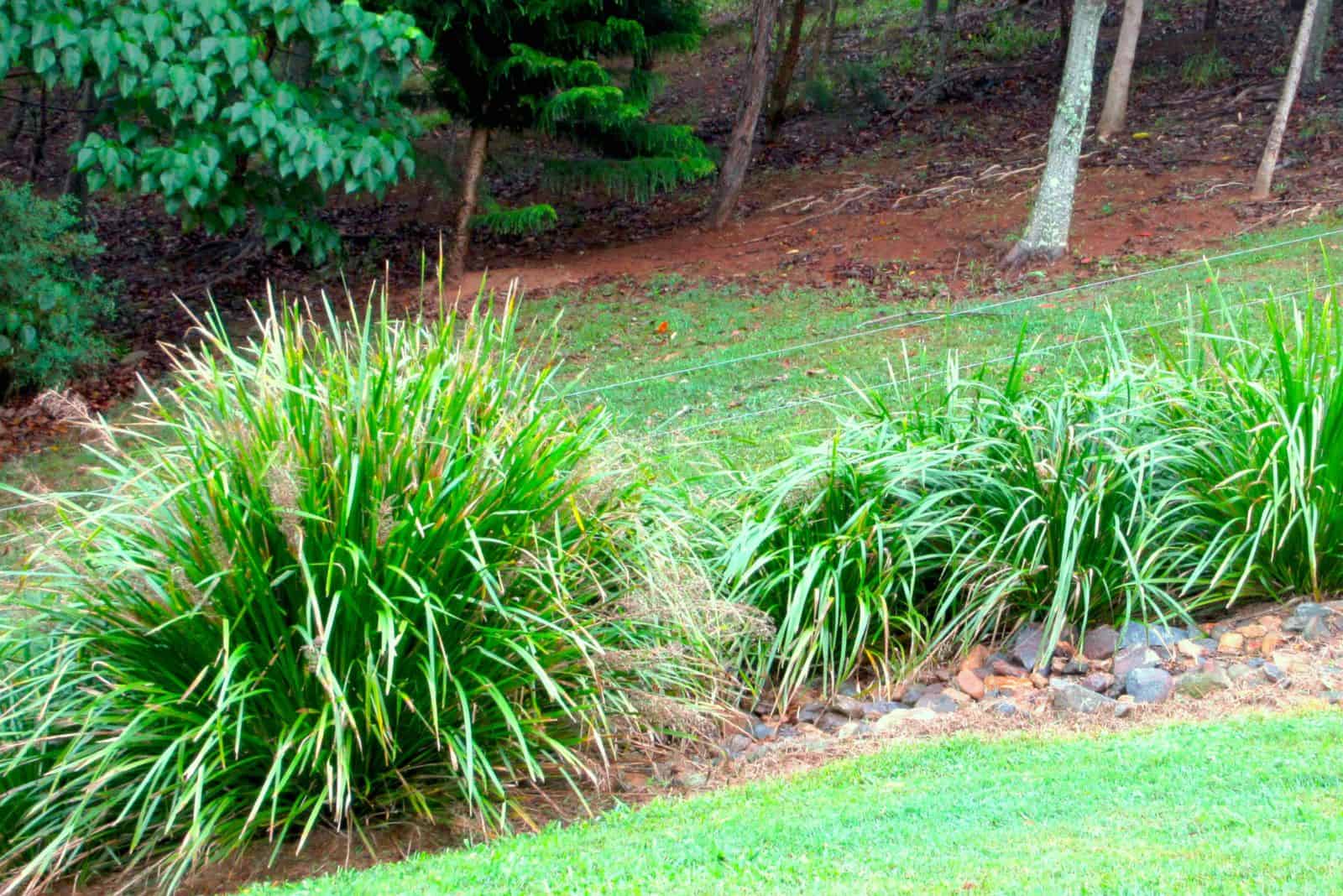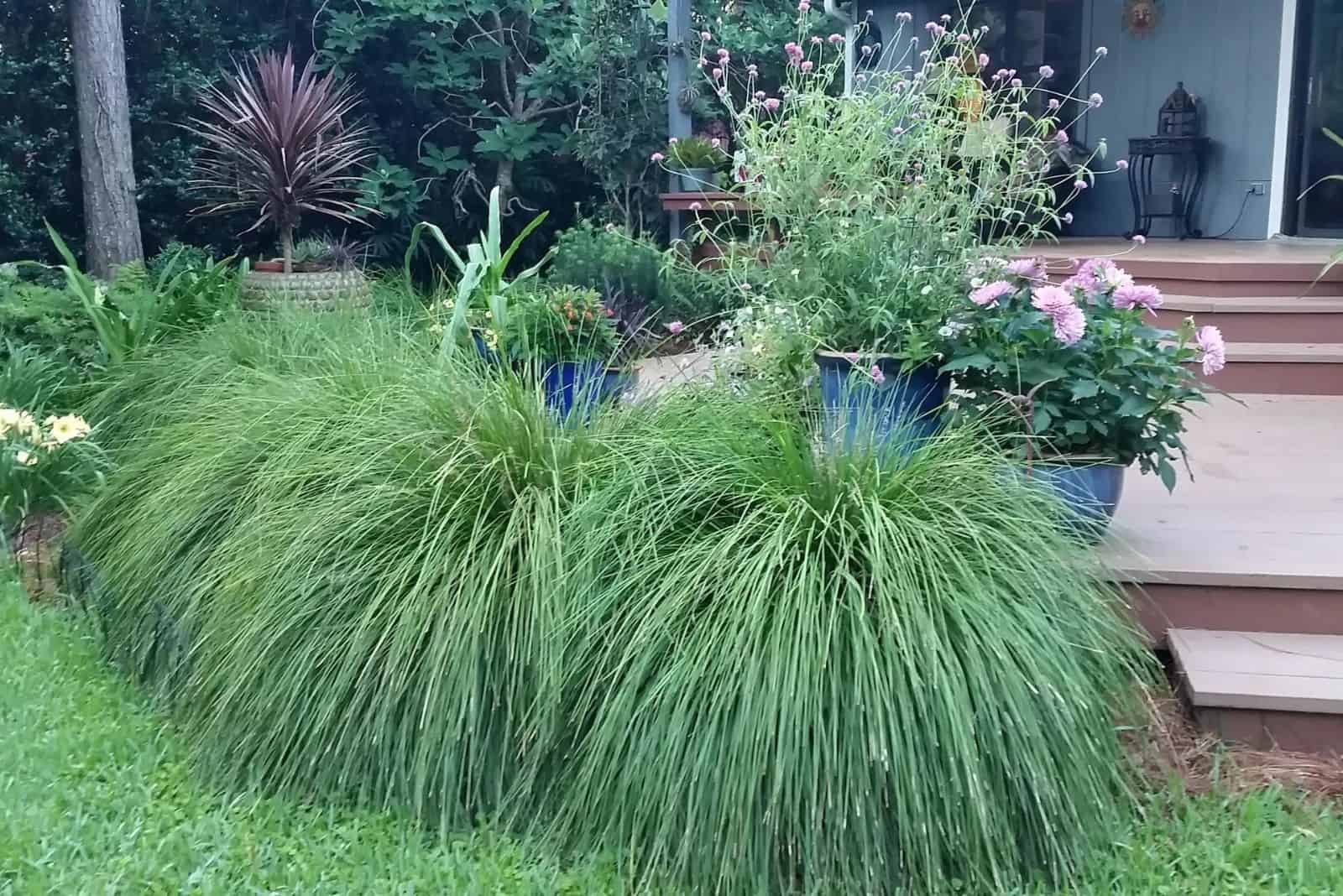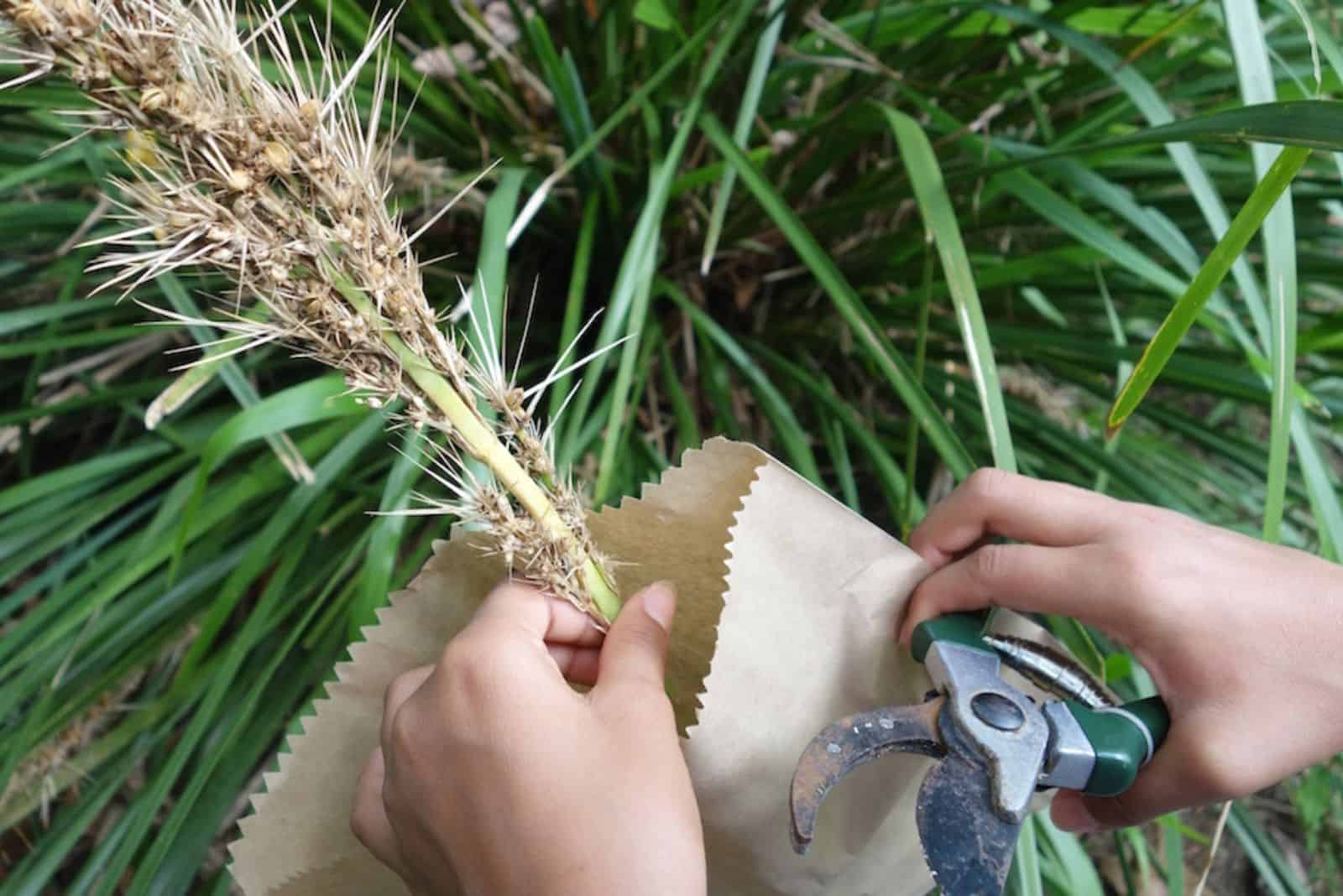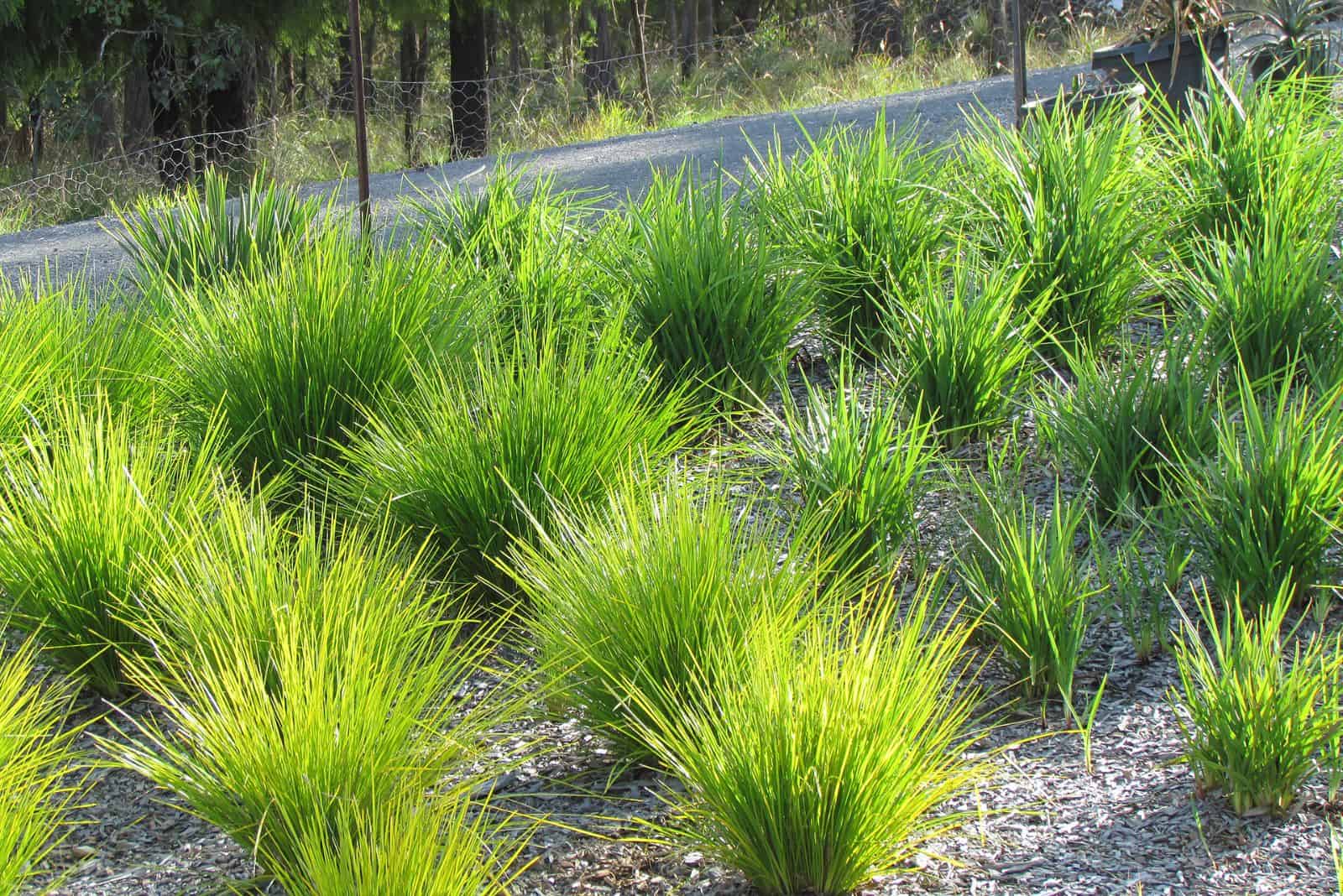If your outdoor garden is looking a little empty and you would like to add an unusual grass-like flowering plant, I have the perfect plant for you – the Lomandra breeze!
Many growers are more familiar with the name dwarf mat rush, but no matter what you call it, it’ll make an excellent addition to your garden.
I especially recommend this plant to beginner growers as the care requirements are really simple.
But that’s not the only benefit of the Lomandra breeze, so keep reading to find out everything.
Let’s start with some basic info about the dwarf mat rush:
[table id=507 /]
Let’s get started!
What Is The Lomandra Breeze?
Lomandra breeze is the shorter version of the scientific name: Lomandra longifolia ‘Breeze’.
This grass-like plant grows to create a bush (one of its special features). It produces elongated and slender leaves that can reach up to 3 feet in height and approximately half an inch in length.
The mature height of the Lomandra breeze is about 3 feet, and the overall width of each bush is typically 4 feet.
The flowering season of the dwarf mat rush begins in the spring and lasts all summer long.
The flowers develop into clusters, and the yellow petals and brown sepals make the Lomandra breeze spectacular during the blooming season.
The flower color isn’t the only great thing; Lomandra breeze flowers produce nectar which draws pollinators. Therefore, if your garden lacks pollinators this ornamental grass will take care of it.
This plant is an Australian native and can survive in a wide range of conditions.
Let’s see what that means!
How To Care For The Lomandra Longifolia ‘Breeze’
The dwarf mat rush is an evergreen perennial with low care requirements.
If you want a happy and healthy Lomandra breeze, ensure it gets full sun, well-draining soil, and a little water.
Let’s discuss the conditions in detail.
Light And Temperature Requirements
If you have a spot in your garden that receives full sun, you can plant your Lomandra breeze there.
You can also grow it in partial shade and it will still grow just fine.
As far as the temperatures are concerned, the Lomandra breeze may grow in lower temperatures, but 20 degrees Fahrenheit is the bottom line.
Therefore, if you live in USDA hardiness zones 7 and lower, I don’t recommend planting the Lomandra breeze directly in the ground.
Luckily, this ornamental plant grows perfectly well in containers, so there’s no need to test its temperature tolerance. Take it inside once the temperatures drop.
Soil Requirements
The only thing to pay attention to regarding soil is that it’s well-draining. Both sandy and clay soils work perfectly for this plant.
You don’t need to pay attention to the pH level, as the Lomandra breeze plant tolerates them all.
Watering And Fertilizing
Regarding the water needs of the Lomandra breeze, it’s lower than average. This means the plant is water-wise and won’t cause trouble if you forget to water it.
Younger plants need more water, but once they fully establish you can forget about watering.
If you grow this Lomandra cultivar in a container, you’ll need to water it more often, especially if you put it in direct sun.
You can feed your Lomandra longifolia breeze plant monthly during the growing season to encourage growth. Use liquid fertilizer and stop feeding once the fall approaches.
If you notice any dead or damaged leaves on your dwarf mat rush, you can prune them to promote healthy growth.
How To Propagate The Dwarf Mat Rush
Luckily, you can get new low-growing Lomandra breeze plants quickly using the division or seed propagation method.
If you decide to propagate, the best time to do it would be in spring.
The first thing you need to do is dig up the soil and take your Lomandra breeze out. If you grow it in a container, carefully remove the dwarf mat rush plant by tilting its pot to one side.
The next step is loosening the soil to expose the root ball. Inspect the root system and divide it into two sections.
If you decide on mass planting, pay attention to spacing and make sure there is approximately 4 feet between each plant.
Young Lomandra breeze plants need more water, so keep the soil moist until the plant is established.
Seed Propagation
Another way to propagate Lomandra breeze is through seeds. The only tricky part about seed propagation is that you need male and female plants; the male flowers, and pollinators will fertilize the seeds, then the female flower will produce fruits.
I recommend consulting with your local nursery when purchasing the seeds for the first time if you want to propagate them the next year.
Once the blooming season ends and the female flowers produce the fruits (closely intertwined seed head balls), you should remove the seed heads and put the flowering stalk in a paper bag.
Put the paper bag somewhere warm to allow the fruit to open and release the seeds. The paper bag will ensure the seeds don’t go everywhere.
Sprinkle the seeds over the seed starting mix and keep the soil moist. New growth typically occurs after a month.
Common Issues
Pests typically don’t invade Lomandra breeze plants outdoors. For potted plants, it’s a different story.
Aphids, mealybugs, and fungus gnats may invade a potted dwarf mat rush and cause damage if not removed.
You can wash your Lomandra breeze with a garden hose if the infestation isn’t severe. Repeat for a few days until all pests disappear.
In the case of a more severe infestation, neem oil will help.
FAQs
What is the Lomandra breeze good for?
Growers use Lomandra breeze plants for mass planting and groundcovers. These drought-tolerant plants are very similar to grass, so you can plant them anywhere in your garden to get the same look.
If you don’t live in a warmer climate or have enough space, the Lomandra breeze makes for a perfect houseplant. Pay attention to watering if you grow the dwarf mat rush in a pot.
What is the natural habitat of the Lomandra breeze?
All Lomandra longifolia plants, including the breeze and katrinus varieties, are Australian native plants. They are grown worldwide due to their unique foliage color. Still, they are also considered drought-tolerant, which has contributed to their popularity.
The dwarf mat rush grows in many habitats, including wetlands and woodlands.
Wrapping Up
If you were looking for a grass-like plant with amazing foliage color and low care requirements, I’m sure you are now interested in growing the Lomandra breeze!
This Australian plant will make your outdoor garden more appealing, and the great thing is that you won’t have to spend much time caring for it to see the Lomandra breeze thrive.
Until next time!
Like this post? Share or pin it for later!

